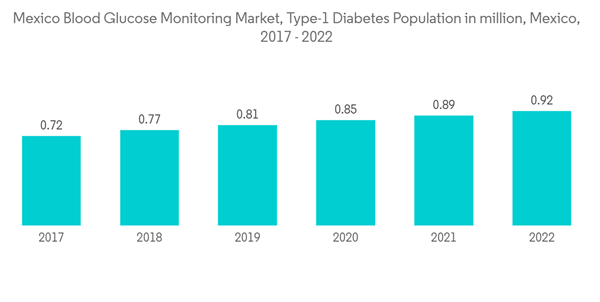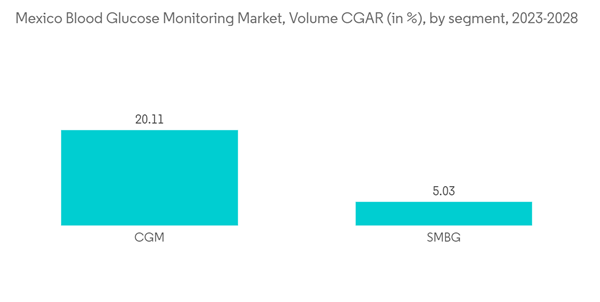The COVID-19 pandemic has resulted in premature deaths, particularly among the elderly, in its first year of existence. Russia has the ninth-highest number of confirmed COVID-19 cases in the world. The majority of COVID-19 deaths were caused by the co-occurrence of two or more chronic conditions in the same person. Several studies have found that chronic diseases such as diabetes are linked to poor outcomes in COVID-19 patients.
The pandemic of COVID-19 has had a significant impact on the diabetes care device market. Diabetes is a chronic condition that necessitates self-management and care, including regular attention to food, physical activity, blood sugar monitoring, and medication use. Chronic diseases such as diabetes and obesity have a worse prognosis for COVID-19. Diabetics are twice as likely to have their comorbid conditions worsen and, as a result, die. The healthcare system must be better prepared for more severe cases of COVID-19, as studies show that poor glycemic control increases the risk of adverse outcomes in diabetic patients infected with SARS-CoV-2.
Therefore, owing to the aforementioned factors the studied market is anticipated to witness growth over the analysis period.
Mexico Blood Glucose Monitoring Market Trends
Increasing Type-1 diabetes population across Mexico
According to the IDF Diabetes Atlas 2021, the diabetes prevalence in Mexico has reached 16.9%, or one in every six adults. Diabetes is expected to affect 14 million adults in Mexico by 2021, a 10% increase over the previous two years. Furthermore, 11 million adults in the country have Impaired Glucose Tolerance (IGT), putting them at high risk of developing type 2 diabetes. Mexico's diabetes-related health expenditure has surpassed USD 20 billion, placing it among the top ten countries or territories in terms of total health expenditure. Undiagnosed diabetes affects nearly half of all people with diabetes in the country (47.5%). Diabetes patients are at risk of serious and life-threatening complications if it is not detected or treated properly, such as heart attack, stroke, kidney failure, blindness, and lower-limb amputation. This leads to a lower quality of life, higher healthcare costs, and a greater need for access to care. Diabetes, particularly Type 2, has become a healthcare burden in Mexico, as it is the leading cause of death among women and the second leading cause of death among men. Obesity, sedentarism, poor eating habits, genetics, family history, and age are all risk factors for diabetes. Type 1 diabetes (T1D) is frequently overlooked and regarded as a low-prevalence disease in Mexico, where type 2 diabetes (T2D) is highly prevalent, and its incidence and mortality are rising1-4. T1D is one of the most prevalent chronic diseases in children, despite the wide range in incidence and prevalence worldwide5. It has been reported that patients living with T1D (PWT1D) receive suboptimal treatment for several years, increasing their risk of developing long-term complications6. Because of this, patients turn to private endocrinologists for treatment, which raises costs out of pocket.As a result, the factors above are expected to boost the growth of the Mexican market.
Continuous Glucose Monitoring Holds Highest CAGR in Mexico Blood Glucose Monitoring Market.
Continuous glucose monitoring sensors use glucose oxidase to detect blood sugar levels. Glucose oxidase converts glucose to hydrogen peroxidase, which reacts with the platinum inside the sensor, producing an electrical signal to be communicated to the transmitter. Sensors are the most important part of continuous glucose monitoring devices. Technological advancements to improve the accuracy of the sensors are expected to drive segment growth during the forecast period.Continuous glucose monitoring sensors use glucose oxidase to detect blood sugar levels. Sensors are the most important part of continuous glucose monitoring devices. Technological advancements to improve the accuracy of the sensors are expected to drive segment growth during the forecast period. According to IDF, the rise in the number of people with type 2 diabetes in Mexico is driven by several socio-economic, demographic, environmental, and genetic factors, including urbanization, decreasing levels of physical activity, and increasing levels of overweight people developing obesity. The prevalence of diabetes is growing among all ages in Mexico. Diabetes mellitus has been of wide concern with its prevalence, resulting in increased financial burdens for clinical systems, individuals, and governments. Continuous glucose monitoring has become a popular alternative to the portable finger-prick glucometers available in the market for the convenience of diabetic patients. The COVID-19 pandemic emphasizes the need for good glycemic control in patients with diabetes, largely because most observational studies have reported that poorly controlled diabetes is associated with a higher risk of hospitalization and death from a viral illness.
The increased diabetic prevalence in Russia and the above factors will likely drive segment growth during the forecast period.
Mexico Blood Glucose Monitoring Industry Overview
The blood glucose monitoring market is highly fragmented, with few major manufacturers present in the market. The CGM devices market is dominated by major players like Dexcom, Medtronics, Abbott, and Senseonics. The market for BGM devices comprises more generic players like Roche, LifeScan, Arkray, Ascensia, etc. Technological innovations in the recent past helped companies to strengthen their market presence.Additional Benefits:
- The market estimate (ME) sheet in Excel format
- 3 months of analyst support
This product will be delivered within 2 business days.
Table of Contents
Companies Mentioned (Partial List)
A selection of companies mentioned in this report includes, but is not limited to:
- Abbott Diabetes Care
- Roche Holding AG
- LifeScan
- Dexcom Inc.
- Medtronic PLC
- Arkray Inc.
- Ascensia Diabetes Care
- Agamatrix Inc.
- Bionime Corporation
- Acon Laboratories Inc.
- Trivida Functional Medicine
- Senseonics










